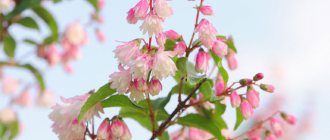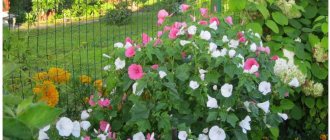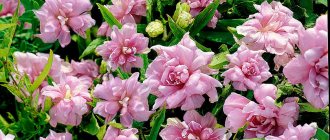Fig (fig tree, Carian ficus) is the closest relative of the ficus. The same ficus that is known to almost all flower growers. And not only flower growers. A very popular plant. But if at home we successfully grow not one, but several types of ficus, then why not try growing figs. Growing it will not be difficult. After all, they even grow pineapples, bananas and persimmons, not to mention those that have long become familiar, lemons, pomegranates, feijoa or coffee.
Figs in Central Russia
There are several hundred varieties of figs in the world. From them you can choose those that will grow in central Russia. The only disappointment is the low probability of fruiting. This is explained by the fact that gall wasps are needed to pollinate fig flowers. And they live exclusively in a certain area. But there is a way out - it is necessary to plant and grow self-pollinating varieties.
Growing figs in open ground
Which variety to choose
To solve the problem of fig fruiting in those regions of Russia where the gall wasp does not live, breeders have developed fig varieties that are self-fertile.
Today there are many of them:
- Dalmatian;
- Nikitsky;
- Abkhazian purple;
- Crimean black;
- Shuisky;
- Gray early;
- Brown Turkey and others.
Gardeners in central Russia prefer Dalmatian figs, the cultivation of which does not bring any particular problems. Its fruits are very tasty, and it tolerates temperature changes well. Feels great even when the readings drop to minus 15°C.
The largest yield is produced on shoots 3-4 years old. On average, the fruits weigh from 150 to 200 g, have an asymmetrical shape and a greenish-yellow color.
Dalmatian Fig
Brown Turkey is characterized by the best winter hardiness. Can withstand short-term cold snaps down to minus 20°C. Fruits abundantly. The fruits are pear-shaped, weighing up to 100 g. The color is red-brown.
Suitable for the middle zone and Crimean figs. It bears fruit with oval-shaped fruits of a purple hue and weighing up to 100 g. Planting gives the best results in the Crimea, Stavropol and Krasnodar Territories, but in the central zone and the Moscow region it can also be planted in order to obtain tasty fruits. But breeding in Siberia is most often doomed to failure - it is better to choose another variety.
Reproduction
Figs, the care and cultivation of which require care, are also demanding in terms of propagation methods. It is believed that the optimal ways to transplant a plant in our climate are:
- propagation using cuttings;
- seed method.
Propagation using cuttings
Seed method
Features of planting figs
Before planting figs in the garden, you need to familiarize yourself with all the nuances. You need to try to create conditions for the seedling that are close to the usual ones. This is quite difficult, especially in winter. Professional advice on planting and caring for figs will help you preserve the seedling and, over time, get a good harvest.
Dates for planting figs
Are figs a fruit or a berry? What is a fig or fig?
Planting timing plays a huge role in the proper development of shrubs. You must try to follow them exactly.
It is recommended to plant figs at the end of April, beginning of May. As soon as warm weather sets in and the threat of night frosts passes.
Attention! It is advisable to purchase seedlings in advance and plant them in the ground as soon as the weather provides favorable conditions.
Preparing soil mixture for planting figs in open ground
Before planting bush figs in open ground, it is necessary to prepare the soil mixture. The plant is not picky about the condition of the soil, but will develop better if it is slightly enriched with nutrients.
When preparing a hole for planting, soil is selected and mixed with organic matter - manure, compost or humus. Next, the mixture is sent back into the hole, forming a ball of soil mixture about 20 cm. The rest is filled in after planting.
Preliminary preparation of soil mixture before planting figs
Technology for planting figs in pits
Choose a place for planting figs that is closed from drafts. Before planting figs in the country, prepare a hole in advance. This is necessary for preliminary application of nutrients.
Important! Experts advise that when planting several plants, prepare a trench rather than holes for each seedling separately.
When planting one plant, prepare depressions measuring 1.5 × 1 m and 0.6 - 0.8 m deep.
The following is poured onto the bottom:
- superphosphate - 200 g;
- potash fertilizer or wood ash - 200 g.
The prepared fertile mixture 20 cm thick is poured on top, forming a mound in the middle. Then the cutting is placed in such a way that its roots are evenly located on the mound and begin to be covered with soil. The mixture around the seedling is well compacted and watered abundantly.
Requirements for growing conditions
After planting, a young plant requires systematic care. First of all, regular and abundant watering is ensured.
How to properly water figs immediately after planting? It is necessary to pour 5 to 8 liters of water under each bush once a week. Older specimens are watered a little less frequently, but the one-time rate is increased to 10 liters.
Important! Under no circumstances should the soil be allowed to dry out. This leads to a deterioration in the taste of the fruit.
After each watering procedure, when the soil dries out a little, it is necessary to loosen the bed. Watering is significantly reduced during fruit ripening. The last time the soil is irrigated abundantly is after harvesting. This procedure allows you to increase the plant's resistance to frost in winter.
How to fertilize figs
In addition to regular watering, figs love feeding with nutrients.
There are several periods during which it is recommended to apply fertilizers:
- Nitrogen fertilizers are what you can feed figs in the spring, in the first ten days of the growing season. They allow you to increase the growth of green mass.
- In July, the time comes for phosphates, which are responsible for the formation of fruit ovaries.
- In the last ten days of the growing season, nitrogen substances are excluded, and attention is focused on potassium fertilizers, which help the development of wood.
- Regularly, once every 2 months, fertilize one leaf at a time with a complex solution.
Important! To avoid burns to the root system, the bushes are watered abundantly before feeding the figs.
What to do after buying a plant
It is better to time the purchase of indoor figs to coincide with the warm season. The southern beauty does not tolerate low temperatures very well. The container with the plant must be transported carefully, trying not to damage the trunk and leaves.
If the purchase is made in winter, it is necessary to carefully insulate the seedling . The container is placed in a thick cardboard box, wrapped in a layer of packaging paper, and covered with any insulation on top. At home, the plant is quarantined for 7-10 days . This is necessary to identify possible diseases, as well as to gradually adapt to new conditions.
At this time, you can carry out preventive treatment of the tree with a solution of “Fitosporin” 1 tsp per 1 liter of water. Spray the leaves and water the soil. After 10 days, the figs must be transplanted into a new container and fresh soil. Take a pot that is not very deep, 1.5-2 liters , made of any material. Ficus soil purchased at the store is suitable for replanting.
The plant, together with the earthen lump, is transferred to a new pot. There must be drainage at the bottom. The voids between the walls are filled with soil. After transplanting, the tree is watered, placed in a bright place (but not in direct sunlight) and left undisturbed for a while so that it takes root.
Caring for figs before the fruiting period begins (first 2 years)
Figs - growing at home
Initial care of fig bushes is no different from growing young seedlings of other fruit plants.
Consists of the main points:
- Water promptly and correctly.
- Feed regularly.
- Thin out the crown and prune in the spring.
- Prepare for wintering, protect from frost.
At first, timely pinching of the young is important. Do not overload the plant while the root system is developing. It is enough to leave 4 young branches up to half a meter long.
Caring for young fig seedlings
Full pruning is carried out a month after the foliage is dropped. During the procedure, make sure that no stumps remain. The branches are removed to the very base.
Crown formation and pruning
An important point during the first 2 years is the process of crown formation. There are two ways:
- Standard. Suitable for shrubs planted in regions with mild climates.
- Fan. Suitable for plants growing in northern regions.
During standard formation, the crown of the bush is not touched in the first 2 years. Only damaged and dry branches are removed. After 2 years, all branches tending upward are cut off. Only shoots growing downwards are left. They are pulled apart and tied to the trunk.
Attention! When fan pruning, 3-4 sleeves are left. That is, the strongest and most well-developed shoots. The remaining branches are shortened to 10 - 15 cm.
Formation is usually carried out in early spring, before sap flow begins. Summer is not suitable for pruning at all. In autumn, you can only do sanitary thinning - remove affected and dry branches.
Bush formation
To properly form a plant, you need to understand how figs grow.
To create a compact shape, you need to build a trellis from wooden slats or ordinary wire. A bush will be tied to it.
In the first year of development, when pruning, three upper shoots 20 cm high are left. One of them is launched vertically, and two lateral ones are tied to a trellis. The result is a kind of trident.
When the stems reach a height of about a meter, they are bent parallel to the ground. Further growth of the stems is started vertically and tied to ensure precise angles.
Next spring, the trunk, which is located in the middle of the bush, is cut 20 cm above the point where the branches appear. Then we repeat last year’s procedure.
To properly form a plant, you need to understand how figs grow.
In this way, the plant needs to be grown to 4 tiers of branches. At the last stage, only two branches are left, which run in different directions parallel to the ground. When they grow 10 cm, they are allowed to grow vertically.
As a result, you get a neat, compact bush that can become a decorative element of the landscape. For example, near garden paths.
How to properly cover for the winter
Anemones - growing and care in open ground
Despite the fact that fig varieties have been bred that can withstand frost, the procedure for covering shrubs for the winter cannot be ignored. It is started in late autumn, when a stable temperature has established, not exceeding +2°C.
- They start by collecting all the shoots from the north side of the plant into a bunch, tying them together and bending them to the ground.
- A plank shelter is built directly on the surface of the ground using plywood or fragments of boards.
- Polyethylene is placed on top of the plank covering and covered with a layer of soil.
This shelter design will allow you to perfectly withstand all the winter troubles.
Advice from experienced gardeners
Watering of figs begins at the end of May. Previously, this is not done, because there are still reserves of rain and melt water in the soil.
In addition to this rule, experienced gardeners share other useful recommendations:
- After each watering, the soil is loosened. The procedure serves to prevent diseases and insect pests, increases the moisture capacity of the soil and prevents the development of weeds.
- Summer residents use sprinkling only if the weather is hot. If the climate is damp and humid, the procedure is not used.
- Water the figs with melt, rain or tap water. Suitable temperature is about +20°C.
- During fruiting and 10 days before it, the plant is not watered.
This is interesting:
Simple ways to propagate figs from cuttings at home
Step-by-step instructions on how to properly cover figs for the winter and prepare the tree for cold weather
Possible problems in growing figs
Problems with figs begin when the plant is not properly cared for. Like any plant planted in open ground, shrubs can be susceptible to diseases.
Attention! To avoid this, it is necessary to carry out scheduled pest control sprays. Monitor its condition and at the slightest sign of pests, take appropriate measures to combat them.
Why don't figs bear fruit in the garden?
In addition to the appearance of diseases and pests, a problem such as lack of fruiting often arises.
This is primarily due to the wrong choice of variety. For planting in the garden, it is necessary to select self-pollinating specimens. Wasps of a certain subspecies, which do not live in all regions, can cope with pollination of common types of figs.
Why do figs fall off?
Another problem that gardeners face when growing figs is fruit shedding. This phenomenon is explained by improper care of the bush. Lack of regular watering has a detrimental effect on the condition of the fruit.
The second reason may be the poor soil on which the bush grows. The situation can be corrected by regular feeding.
Following the advice of professionals will ensure a chic crown and abundant fruiting of figs
Although figs are considered unpretentious plants in terms of rooting and growth, young seedlings must be properly cared for. It is necessary to listen to the recommendations of experts, then the bush will reward you not only with thick and beautiful greenery, but also with a rich harvest of exquisite fruits.
Planting shrubs
In order to solve the question of how to grow figs on a plot, you need to take care of proper planting. For this plant, the best way is to plant deep in trenches.
The best way is to plant deep in trenches.
They need to be dug in such a way that the depth is at least half a meter and the width is about a meter. If the soil is loamy, it is better to pour a drainage layer of sand and fine gravel onto the bottom.
For the substrate, surface soil is mixed with humus, manure and compost, and then poured into the planting hole.
After this, small mounds are poured onto which the seedlings will be placed. To do this, the roots are straightened, and the seedlings are covered with earth, holding the stems to the level of the root collar.
For the substrate, surface soil is mixed with humus, manure and compost, and then poured into the planting hole.
The southern slope is covered with a dense black film, which will not only protect the root part of the stem, but also prevent weeds from growing. The appearance of weeds can lead to diseases, as they block the bottom of the bush from the sun.
From the northern part you need to install a polymer wall or from slate sheets. It will reflect light rays and smooth out uneven lighting.
Diseases and pests
Based on where figs grow, you need to be prepared for the fact that the plant will be susceptible to various diseases and be attacked by pests.
The most common diseases are the following:
- Branch cancer, which covers the affected area of the trunk with cracks. As a result of the disease, the wood is exposed and part of it dies.
- Gray rot manifests itself as a gray and white coating on the fruits themselves.
- Fusarium leads to internal rotting of the fruit and peeling of the pulp.
- Anthracnose is characterized by the appearance of dark spots on fruits, which lead to rotting of the fruit.
- Fruit souring begins with the appearance of various brown or watery spots.
Branch cancer
Gray rot
Fusarium
Anthracnose
Fruit souring
Pests
The following pests can attack the bush:
- A moth that can cause fruit to rot.
- The leaf roller, which is considered a pest of honeysuckle, damages the bush in such a way that the leaves turn yellow, the fruits begin to rot, and the stem itself dries out.
- The psyllid threatens to slow down the growth of the stem due to the lack of nutrients sucked out by the pest.
- The pine beetle damages the bark, which often leads to the death of the plant.
The moth can lead to rotting of fruits.
To combat pests, it is necessary to use special insecticides, and various fungal diseases can be overcome by normalizing the climatic regime of watering and careful care.
Propagation by cuttings
For this method, you can use both winter seedlings and summer green shoots.
Winter cuttings are taken only from plants that are at least a year old. Cuttings are planted in early spring in light soil until buds appear.
Green cuttings should be planted in late spring or early summer, preferably in sand. Cuttings are taken from fruit-bearing plants. Before rooting, they are kept in a humid environment. (This can be a jar of water or a regular glass).
Cuttings are planted in early spring in light soil until buds appear.
Place the container in a warm place. After about 3-4 weeks, roots will appear, and when they are 1-2 cm long, they can be planted in the soil.
Spring care
After the end of the cold weather, one of the most important moments in caring for figs is the timely opening of the plant.
To prevent the stem from drying out, it must be opened in mid-April. If the soil above the structure has not thawed, it can be spilled with hot water.
To prevent the stem from drying out, it must be opened in mid-April.
After this, a greenhouse is erected over the tree, and the associated branches are straightened. The stem is cleared of dry leaves, while the fruits formed during wintering are left on the branches.
Indoor varieties
Figs come from the Ficus genus. Houses have been grown since the 18th century. Scientists have developed indoor varieties that are small in size and self-pollinating.
The table shows the main types.
| Variety | Description of fruits |
| Sochi 7, Sochi 8 | Selected species bred on the basis of the white Adriatic by scientist Yu.S. Chernenko. Medium size, 65-70 g, yellow-green skin color, red flesh, juicy. They ripen at the end of summer. |
| Sochinsky 15 | Lemon color, pink inside, 75 g. They bear fruit in the fall, from September to November. |
| Dalmatica | Large, 130 gr. Green outside, scarlet inside. Harvest in July, October. |
| White Adriatic | Yellow-green hue, 60 g, sweet. In June, August. |
| Ogloblin seedling | A selection species, bred by N. A. Ogloblin. Tied in the fall before the rest period. They leave for the winter in the form of small green berries. By summer they gain growth and mature during the growing season. |
| Sary Apsheronsky | Small, 40 gr. Cream color, salmon flesh, sugar. Double bountiful harvest in late summer and early fall. |











